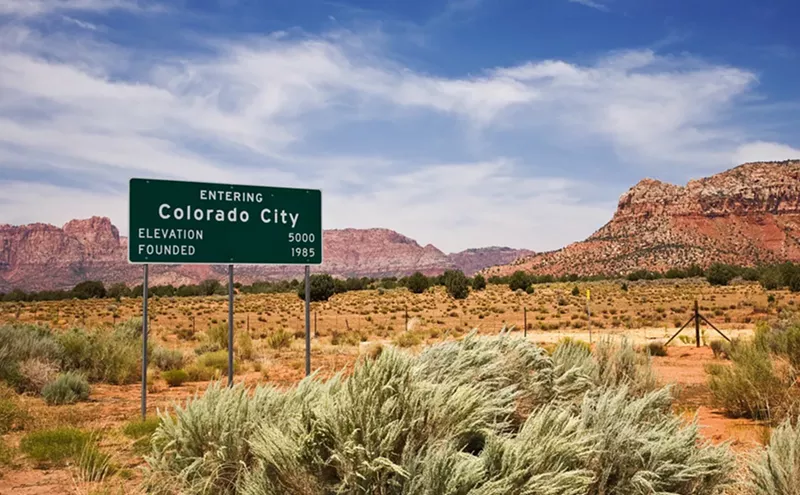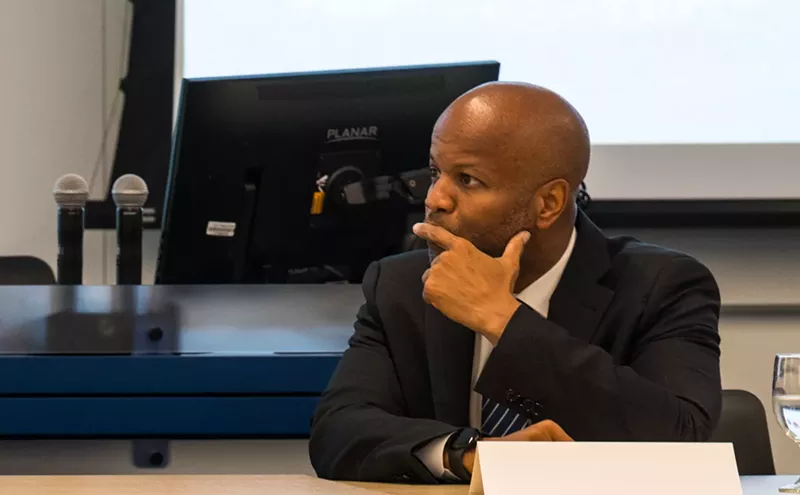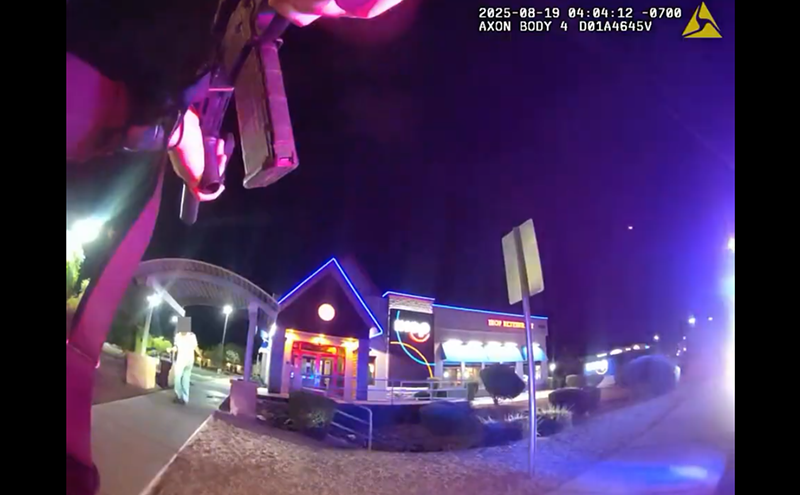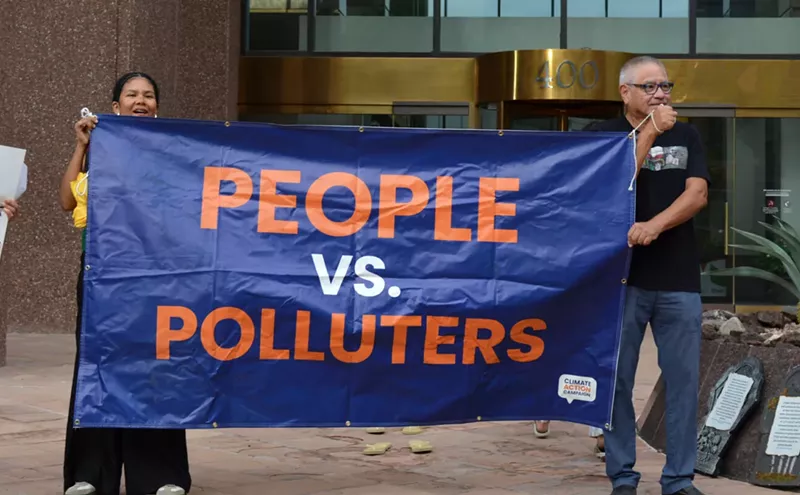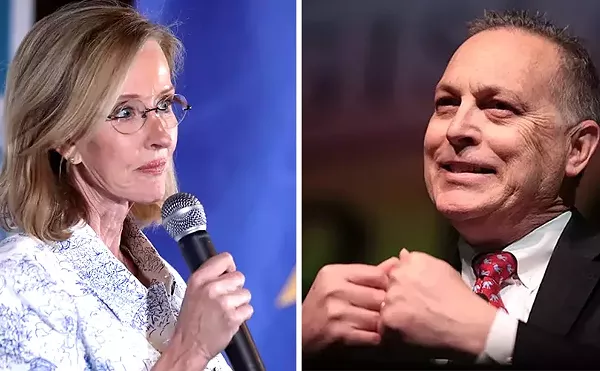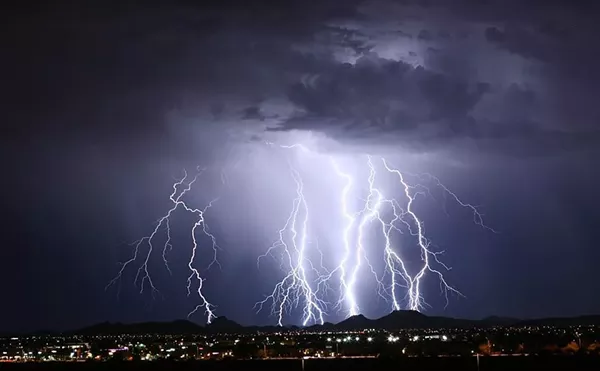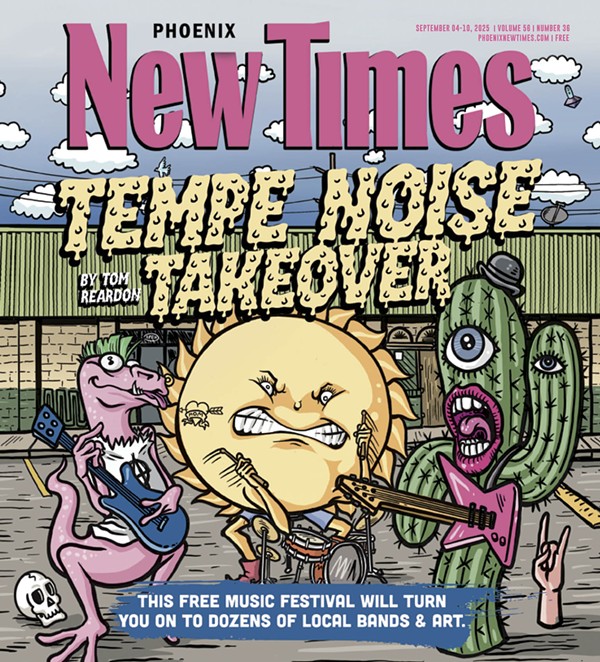It was a labor of love that served as a grassroots bicentennial project. Some 28,000 schoolchildren donated pennies and other change to fund the project. Descendants of pioneer families, including relatives of Mesa's first schoolteacher, donated items to make the little museum authentic. The facility was built by vocational technology students from Mesa's high schools. Future Farmers of America club members worked on the exterior grounds. Home economics students made the period costumes that mannequins wore inside the schoolroom.
And when the building was dedicated in 1976, then-first lady Betty Ford participated in the event along with 10,000 citizens of Mesa.
"It was the biggest public gathering in Mesa's history up to that point," says Joanie Flatt, a Valley public relations executive who helped coordinate the project when she was the Mesa public schools community relations director.
Last year, the Little Adobe Schoolhouse was unceremoniously demolished. It's being replaced by a much-touted dinosaur exhibit. News of the school's impending demise somehow escaped many of the people who had helped build it.
Kathye Brown noticed it was gone one day as she drove by the site. She called her husband to tell him the news. Wayne Brown, Mesa's mayor, was shocked. So was Flatt when Wayne Brown called her.
And so were other members of the city council and area residents who had donated time, money and memorabilia to the little museum, according to Flatt.
Sure, they remembered approving the $4.5 million in bond money to finance half of the Southwest Museum's expansion. And they had seen the plans for turning the facility into one of the largest dinosaur museums west of the Mississippi River. But somehow they missed the part about the city having to destroy the Little Adobe Schoolhouse in the process.
Apparently, so have local media, who lately have been trumpeting the new facility -- really an expansion of the existing Mesa Southwest Museum. Set to open May 23, the museum will include increased natural history and historical areas, a dedicated Arizona Highways magazine gallery, an aquarium featuring live descendants of prehistoric fish that used to live in the area 60 million years ago, and lots of animatronic dinosaurs.
The centerpiece will be the three-story Dinosaur Mountain, which will take visitors through 200 million years of history, featuring period creatures along the way, to present day. Included will be a 50-foot waterfall and a simulated flash flood complete with lightning and thunder.
While updates about the expansion have been breathlessly reported in local newspapers ("completely DINO-mite," proclaimed one Tribune article), plans for a new schoolhouse are proceeding quietly and slowly.
Now, bruised feelings aside, supporters are working to build a new schoolhouse replica near the site of the city's first settlement.
"We want to know where to put it so they can't tear it down," says Howard Godfrey, a retired city administrator who, through his work with the Mesa Historical Society, is leading the effort to build another schoolhouse.
Plans for the building are still in the early stages, he says. The city has budgeted $65,000 for the project, local architect Ron Peters has agreed to donate plans for the school, and a July completion date has been set. Land owned by the historical society on Horne Road is being surveyed to determine where the first school was located and where the new replica should be built.
Although the money was allocated for the current fiscal year, which began six months ago, serious work on the project is just now beginning. Boxes of materials saved before the demolition have not been examined. And a contractor has yet to be hired.
At the old Little Adobe Schoolhouse, visitors to the building could walk inside and see an authentic reproduction of the 1913 schoolhouse, complete with a schoolteacher and children at their desks. An audio tape told about the first school and its history. And although it was only a replica, it was the city's first period museum, and it became a part of city history to those who had been involved in the project.
An account of the development of Mesa's museums on the city's Web site says the bicentennial dedication prompted "a surge of public interest in Mesa's heritage." This then led to the development and 1977 opening of what was later named the Mesa Southwest Museum, which shared the site at Macdonald and First streets with the Little Adobe Schoolhouse.
It was the expansion of that facility -- which has evolved into more of a natural history museum with an emphasis on dinosaurs -- that led to the demolition of the schoolhouse. Flatt blames a "Dinosaurs 'R' Us" mentality for the demise of the Little Adobe Schoolhouse. And she is still bristling over the way in which the adobe structure came crumbling down.
The schoolhouse had structural problems that would have made it unsafe to occupy in a matter of years, officials have said. But while many were aware of the plans to double the size of Mesa Southwest Museum, Flatt says people weren't specifically informed it would involve tearing down the schoolhouse.
Tray Mead, museum director, says he is sorry people didn't realize that the schoolhouse would have to be torn down to accommodate the expansion. "It was discussed in three public meetings," he says.
Mead compares it to a museum exhibit being moved from one place to another, something that happens all the time. He says the time capsule buried when the schoolhouse was constructed as well as all the original and replicated items from the interior of the facility have been saved and will be included in the next location.
Godfrey, who spent 35 years working for the city and was community development manager before his retirement, calls himself the head of the Mesa Historical Society "by default." The group is between directors and the president was called away on a Mormon mission. And so he is also, by default, the volunteer head of the Little Adobe Schoolhouse project.
He says the society is donating the land for the project in Lehi, where the original Mormon pioneers settled in 1877 before Mesa was founded. The new structure, which will feature posts and beams filled in with adobe, will be as authentic as possible and structurally sound, he says. And it could eventually be part of a re-created village on the site near the Mesa Historical Museum, 2345 North Horne.
"As long as the Southwest Museum has gone into the prehistoric stuff, we'll concentrate on the historic," Godfrey says.
Flatt, who also serves as president of the East Valley Partnership and the East Valley Chambers of Commerce Alliance, says Mead has every right to change the focus of the Southwest Museum.
"It's not a history museum. What Tray has done is made it into a natural history museum, which is fine. It will have lots of visitors. It's a beautiful new facility. Anything that draws more people to downtown is a good thing," she says.
But Flatt and others would have appreciated notice about the destruction of the Little Adobe Schoolhouse.
"We could have used the occasion to celebrate the fact that it was here and to raise money for the new facility. There were a lot of us who would have liked to have found out about it so we could have said goodbye."
She says she'll be happy to see a replacement Little Adobe Schoolhouse: "That's fine. As long as they replicate it. The point was to savor something really important in Mesa history and to celebrate the history of public education in the town."
Contact Laura Laughlin at her online address: [email protected]



